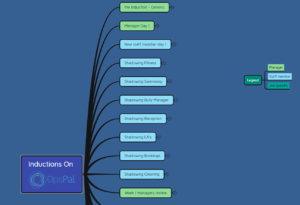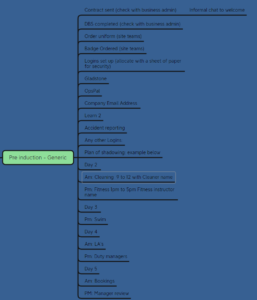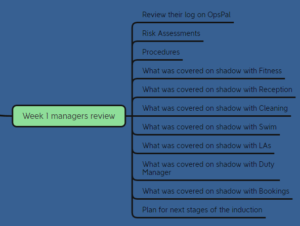Onboarding Checklist – Free Excel sheet and video walkthrough
Digital Onboarding: Getting the start right for all new staff
Your company’s most valuable assets are undoubtedly your staff. Having the right employees with the knowledge and abilities to excel can be the difference between success and failure. To secure and expand your pool of content, engaged, and productive long-term staff members, it’s essential to not only attract top talent but also invest in a comprehensive employee onboarding programme. If you’re new to this concept, let’s delve into it further. I have added a link of a video of me talking through the inductions process here.
If you would like a free copy of onboarding checklist in the video or PDF of the mind map I talk through, please email me at craig@opspal.com
 Understanding Employee Onboarding
Understanding Employee Onboarding
Employee onboarding is a process designed to help new staff members seamlessly transition into their roles, familiarise themselves with their colleagues, adapt to company culture, and understand company policies. This process blends induction with on-the-job training to swiftly transform newcomers into highly productive team members. Onboarding plays a pivotal role in initiating and sustaining employee engagement as their careers evolve within the organisation.
However, the benefits of an employee onboarding programme can only be maximised if it’s structured correctly from the outset. Here are some best practises to consider:
1. Start Onboarding Before Their First Day
Many organisations traditionally kick off the onboarding process on a new employee’s first day. However, the period between receiving a job offer and the first day can be a significant delay. Use this time to build excitement, create a positive initial experience, and start providing the information they’ll need to become productive quickly. Making sure you are ready for them and that your team is too is essential.
2. Implement exceptional hiring and welcome practises.
Prepare new hires not just for their first day but for their entire first month in their new role. Create a new hire checklist that includes:
 A personal welcome call and email
A personal welcome call and email- Sending a welcome package
- Ensuring all necessary tools and resources are ready (login details, etc)
- Developing an orientation programme and agenda (picking the best people for the job)
- Facilitating opportunities for new hires to meet colleagues
- Involving leaders to discuss company culture and values
Onboarding is not solely the responsibility of the HR team; it should engage various team members, managers, and senior leaders in different activities. This can include a company founder delivering a presentation, giving tours, presenting in training programmes, or simply taking new recruits for coffee or lunch.
3. Foster Early Connections with Co-Workers
Help new employees connect with their teammates as soon as possible to create a sense of belonging and inclusion. Strategies can involve:
- Scheduling short introductory meetings with co-workers (shadow sessions)
- Appointing an existing team member as a mentor or buddy (one buddy for their role and interdepartmental)
- Hosting team lunches or team-building events for informal interaction (this should be for all staff, but new inductees should be involved from the off)
4. Leverage Onboarding Software Tools
An effective onboarding process often involves a multitude of tasks, from paperwork completion to training programmes. To save time and ensure no crucial steps are missed, consider using onboarding software tools that automate and streamline these processes. Tools like OpsPal can cover all training needs, compliance, and policies in a structured way to help both the managers and the new inductees.
5. Conduct Regular One-to-One Meetings
One-to-one meetings between line managers and their team members are essential for building positive and productive relationships. Integrate these meetings into the routine of new employees as soon as possible.
 6. Gather Feedback
6. Gather Feedback
Collecting feedback from employees is vital to improving the onboarding process. While exit surveys can provide insights into why employees leave, it’s equally important to gather feedback earlier in the process. Onboarding reviews are invaluable for understanding your recruitment process’s impact, as well as the quality of their first day, induction, training, and their initial weeks and months with the organisation. These meetings offer valuable insights for enhancing onboarding and retaining more productive long-term staff members.
In conclusion, a well-structured employee onboarding programme sets the stage for successful, long-term employment. By adopting these best practises, you can ensure a smooth transition for new hires and foster a more engaged and productive workforce.
If you would like to look at how OpsPal could help with this, click here to book a chat
For a copy of the onboarding checklist, please email me at craig@opspal, and I will happily send you one over.












